I wasn’t excited about testing a Rebel 300.
I mean, I had mixed feelings. I know it’s important to cover bikes I might not go buy at this point in my life. New riders often rely on a seasoned vet to tell them everything they need to know due to a lack of context, but an entry-class cruiser doesn’t really get me hot and bothered. With all that outta the way, the Honda Rebel was really fun to review. This bike is important for two big reasons: It is at this point completely unique, and it also is a phenomenal motorcycle for its given task. It may actually be the best bike I’ve ever tested.
To be clear, I mean best in context. On the spec sheet, many bikes slaughter the Rebel. But what is the job of a Rebel 300? In almost all cases, it needs to be a friendly bike that makes riding fun and not scary for rookies. It can’t leave them feeling awkward and dorky every time a rider on a bigger bike nods knowingly and asks, “First bike?” It needs to start every time, be rough and tumble, and it needs to have enough pizzazz to keep newbs interested, but not so much that it makes learning hard. Ideally, the bike is almost clairvoyant.

Last man standing
The Honda Rebel 300 is the only modern small-engined cruiser available. The class has died off almost to extinction, which is a shame. The small size, low weight, and unintimidating engine makes them perfect bikes for new riders, especially those with short inseams. I think it’s not a stretch to assume that anyone starting out is looking for a low-cost, high-value machine with aesthetics and fit that hit the marks. So let’s consider the players in the game, eh?

The only remaining cruiser under half a liter in displacement, besides the new Rebel 300, is the Yamaha V-Star 250, which was basically Yamaha’s response to the 250 Rebel. Like the first-gen Rebel, the XV250 ain’t a modern bike: The V-star has a rear drum brake, carb-o-lator, and five-speed gearbox. There’s no way that bike continues to meet emissions for very long. I imagine it will vanish very, very soon. Also, its MSRP is within 50 bucks of Honda’s new Rebel. New riders: Please do not buy this bike (new). It’s not a great value.
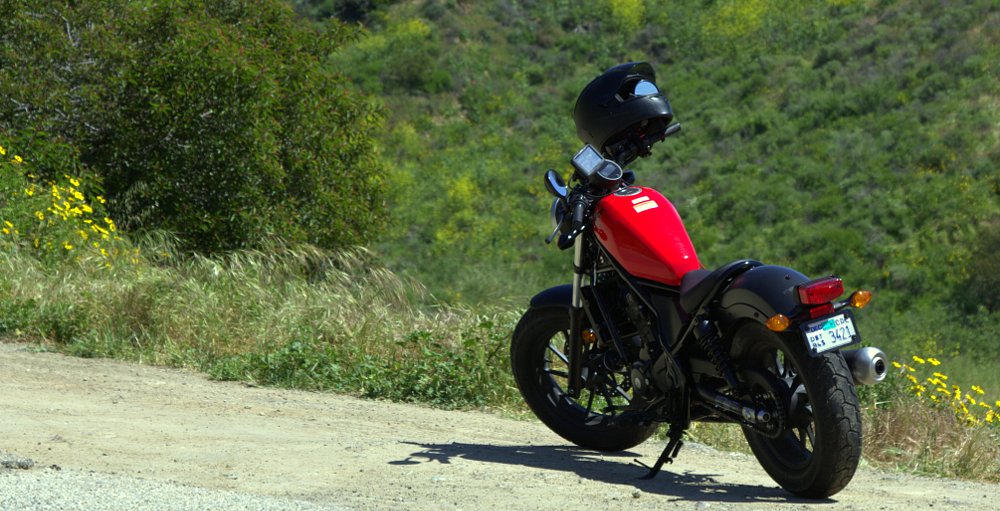
So what else does the Rebel compete against? You can buy a Suzuki VanVan if retro is your game. It too has a drum brake, five-speed, and only a 200 cc engine, though Suzuki did fit it with fuel injection. It’s also more expensive than the Rebel. (Just a hundred bucks, to be fair.) It has a 30-inch seat height, which is another barrier to entry for some. The 14-inch tire on the back is the deal-killer for me. Go look to see what your tire options are for that bike — I’ll wait right here.
A Kawasaki Vulcan S has a 28-inch seat height, but it costs a whopping $3,000 more than a Rebel. Honda is the only game in town if you want a learner bike with a low seat.
Improvements galore
Spurg and I touched on something briefly in the video: Making a bike “better” in the more advanced categories is easy. Just make it lighter and faster, and make the brakes and handling razor-sharp. That recipe doesn’t work in the rookie segment. How does a beginner bike actually improve? How do you make a bike objectively better without making it hazardous? To answer that, you can look at a number of improvements Honda made when overhauling the Rebel.
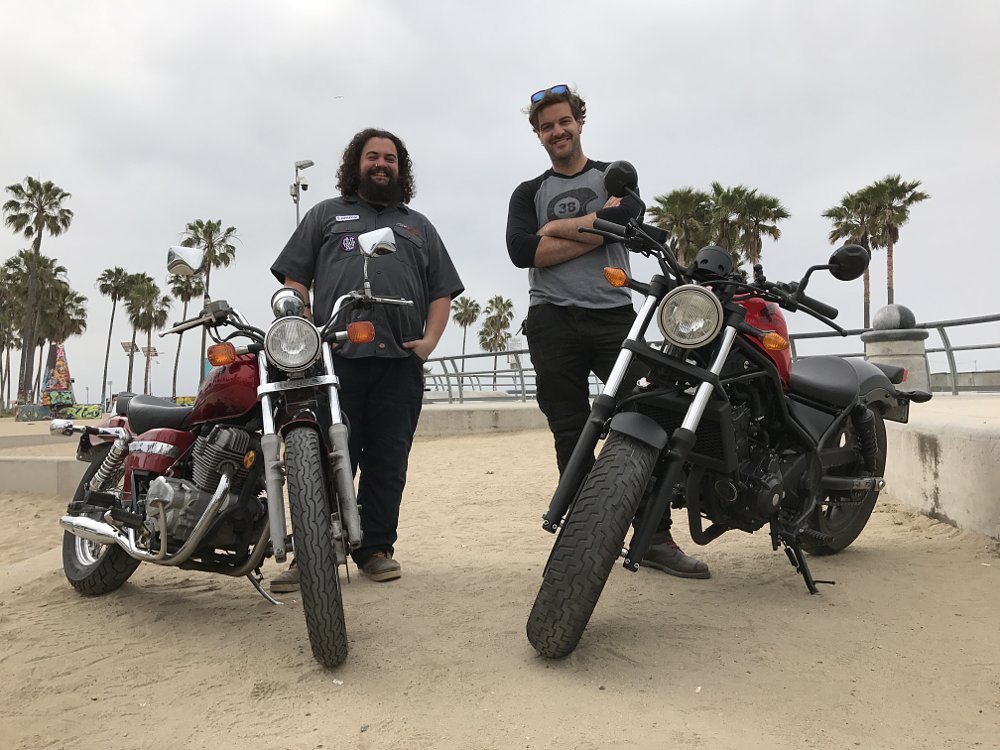
Maintenance got easier. (There is a comical amount of room to work around this engine, since the frame is made to hold the larger 500 unit, too. Working on the baby Rebel will be a cinch.) Wrenching in this day and age gets harder and harder each year. Motorcycles are increasingly complicated to work on, but this bike is actually very user-serviceable. Valve adjustments will be a snap. I installed a battery in this bike in the short time we had it. That was a cakewalk. Fluid changes and spark plugs present no problem. The cast wheels vastly simplify tire changes. (Rookies: The new tire sizes are way better. The 15-inch wheel on the old 250 Rebel severely limits the quality of tire you can purchase. These new 16-inch sizes provide access to exponentially better rubber.)

Let’s talk customizing. A chopped 250 Rebel isn’t the most common sight, but I think that will change with the Rebel 300. The 500 riders will demand parts, and many of those parts will fit the same-except-the-engine 300. I’ve already seen Rebel 300s that have been mildly tweaked and they look nifty. Options are wide open: Honda intentionally made the rear lights easy to remove, and in fact the whole rear fender and the struts are easily removed. The pipe will be easy enough to modify, and for the rider who wants to make a big upgrade, sliding a 500 engine in should be doable. (Or return the 300 to stock, sell it, and bolt all the cool-guy parts back onto a new 500.)
Honda also made this bike sturdy and reliable — no small feat considering the previous Rebel’s track record as a tough little goober. Fuel injection removes all the hassles of a carburetor. No more annual spring cleaning to unclog the microscopic jets a 250 requires. No mo’ stupid “Is it warm yet?” enrichening device. (Choke, in layman’s terms.) It has an LED headlight, so freshman riders will not be installing anything more difficult than a brake light bulb. And those valve adjustments I mentioned earlier? Honda increased the interval on the checks from 4,000 miles on the 250 to a whopping 16,000 on the 300! Most U.S. bikes will likely see three owners before the valves will need to be checked.
Riding the Rebel
Spurgeon putted up to our Airbnb on the 300 and that’s when I took possession. Over the course of the next five days, I racked up 400 miles on the bike. That’s not enough for me to feel confident doing a full review, but it was enough to get acquainted with the bike. Before I tell you about my first impressions, though, let me tell you about my preconceived notions. First, I expected to dislike the increase to six speeds in the transmission. Second, I recall thinking that bumping up the horsepower (from about 17 for the 250 to about 26 for the 300) was unnecessary.

Lastly, I used to own a Rebel, so I can’t help but compare old and new. I bought mine brand-new from a dealer who has long since closed their doors. If my notes scrawled on the back of my only photo of the bike are correct, it was a 2004 model that I bought for $2,798. It was my fourth bike, which is a bit odd: Nowadays a “little” 250 cc street bike is almost universally a first motorcycle. However, at that point in my career I had ridden better bikes and had a good grasp of the Rebel’s shortcomings, but riding it again 13 years later back-to-back with its replacement revealed starkly where the bike fell short compared to modern two-wheelers.
I kicked things off by removing the battery so I could hook up a GPS and cruise around California without calling Spurg (a former native) every six seconds. To remove the seat, you have to use an Allen key, which is thoughtfully provided under the right side cover. It’s held in place by a big flathead screw. The flathead screwdriver, however, is in two pieces, and both of them live under the seat. Perverse. Those who have ever owned a first-gen Triumph Modern Classic will understand my frustration. (Spurgeon, a Trumpet owner, laughed at me. In fairness, the screw was made to allow a coin to free the tool, which I had in my pocket.) Some inconsiderate member of the motorcycling press stole our shock spanner from under the seat, so I couldn’t adjust the rear preload for my heft.
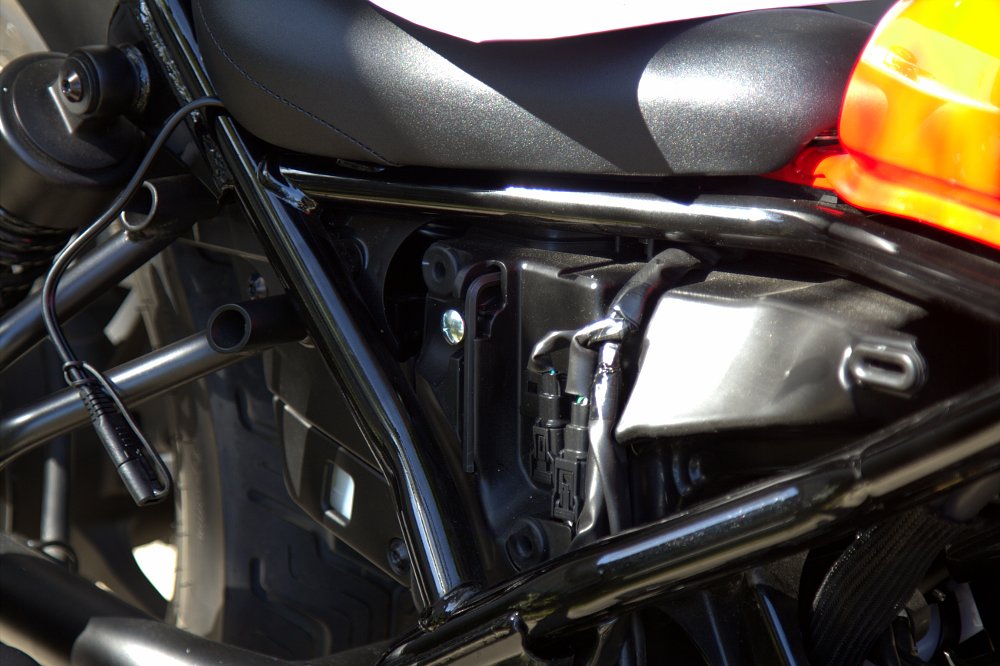
After the bike was back together, I jumped on and fired it up. As I was putting on my lid, I noticed Honda is no longer including pillion equipment. At first I thought Honda was being parsimonious, but on second thought, I don’t think I have ever seen two people traveling on a Honda Rebel simultaneously unless it was for a goofy picture. So, I revised my thoughts: Honda looks like a cheapass (to me) by not including those items on the 500, but I’m not reviewing that bike.
I enjoyed the new seating position, with my feet a bit farther underneath me than on my old 250. At six feet tall, I was slightly cramped on the bike, but I’m also a little bigger than the planned rider. At 275 pounds, my ass is significantly wider than the one this saddle was designed for, but I spent several 12-hour days on the Rebel and I was not unhappy. That’s damn impressive for a bike that was never meant to perform such feats.
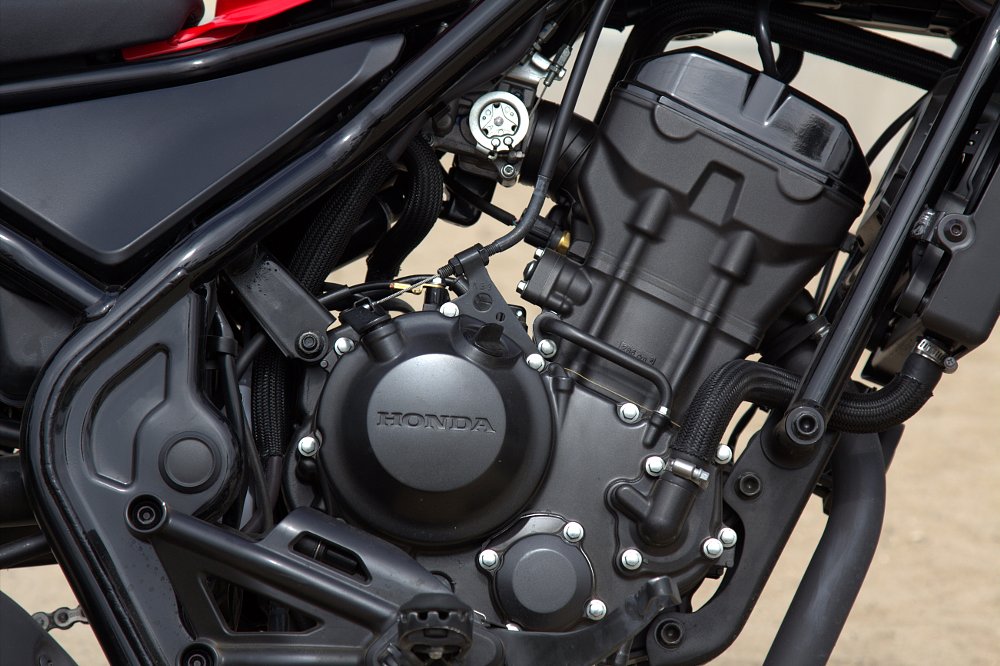
Remember when I said I was prepared to dislike the six-speed? And that I thought doubling the power was absurd? I was wrong. The greater power comes on high in the rev range, so unless Ricky Rookie is wailing on the Rebel and banging it off the rev limiter, the power delivery felt just slightly crisper than the old twin’s. And the six-speed is great for extending that power out onto the highway. A Rebel 250 on the highway feels like it had three more cups of coffee than it should have. The Rebel 300 is far less frenzied, but it does vibrate noticeably through the seat. My naughty triangle went numb more than once. At 65 mph, the mirrors have a pronounced buzz. At 70 on up to the top (82 as tested; I maybe had one or two mph more if I had tucked in), they’re as useless as the ones on my old Harleys. But let’s keep this realistic; this is a thumper motor that redlines at 10,600 rpm. Forgivable.

Spurgie set me up with a little route to traverse up the PCH and onto Mulholland Drive. The recent rain had a profound effect on the area; I was surrounded by the prettiest desert flowers. I ran across a Honda Grom event (!) that was taking place. Everyone was really kind to me and it was kind of a hoot: being surrounded by Groms meant everyone who walked up to the brand-new Rebel said, “What’s the big bike?” Lulz.
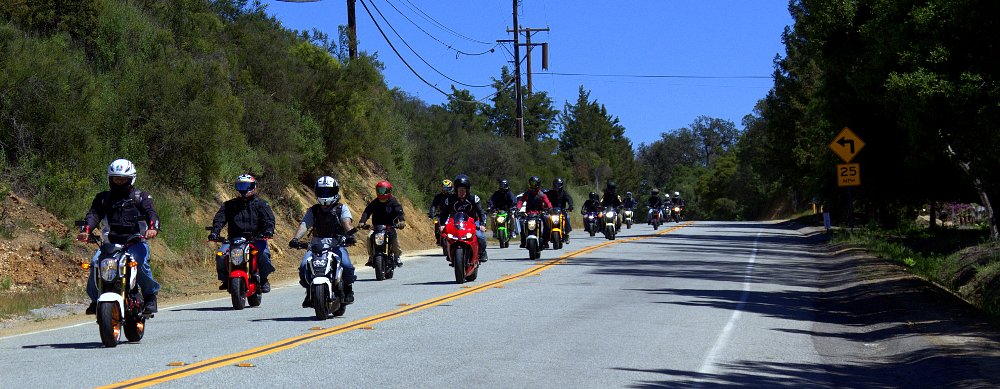
I rode the baby Rebel most inappropriately, and I can’t tell you how complimentary I am by saying I enjoyed myself. I was asking that machine to haul a huge, violent rider as I ground the bike down, flipping it through the turns. That little 300 engine has a big heart when you start revving it. I put the spurs to the Rebel, and it performed admirably. Spurg and I disagree about this bike’s engine: He feels the 500 is more appropriate for a larger rider. I do not. If the 300 can get fat, angry Lem above legal highway speeds in a timely fashion, I would think most beginning riders should be well served by it.

Braking was drama-free. I mentioned this in the video, but if there is a bike and rider combo that could use ABS, it is a new rider on a late-model bike. I think the choice to have ABS is still a good one, but I would also encourage any riders who are not experienced to opt for the ABS on this motorcycle. Train on what will be the dominant technology moving forward. (Rookies: ABS brakes require you to apply the brakes as fast and hard as you can. Non-ABS bikes require you to modulate the brakes, ideally bleeding off some pressure just prior to locking up the brakes. This skill is difficult to learn and master, and even at your best, ABS will almost always outbrake you. The most important takeaway is that you cannot train for two opposites in an emergency: You probably won’t have the presence of mind or time to remember what braking technique the bike you happen to be on requires.) The Rebel 250 stops like shit in comparison. I remember that bike being OK for what it was, and OK is still the term I would use today. The Rebel 300 is just better at stopping in terms of both lever/pedal feel as well as potency.
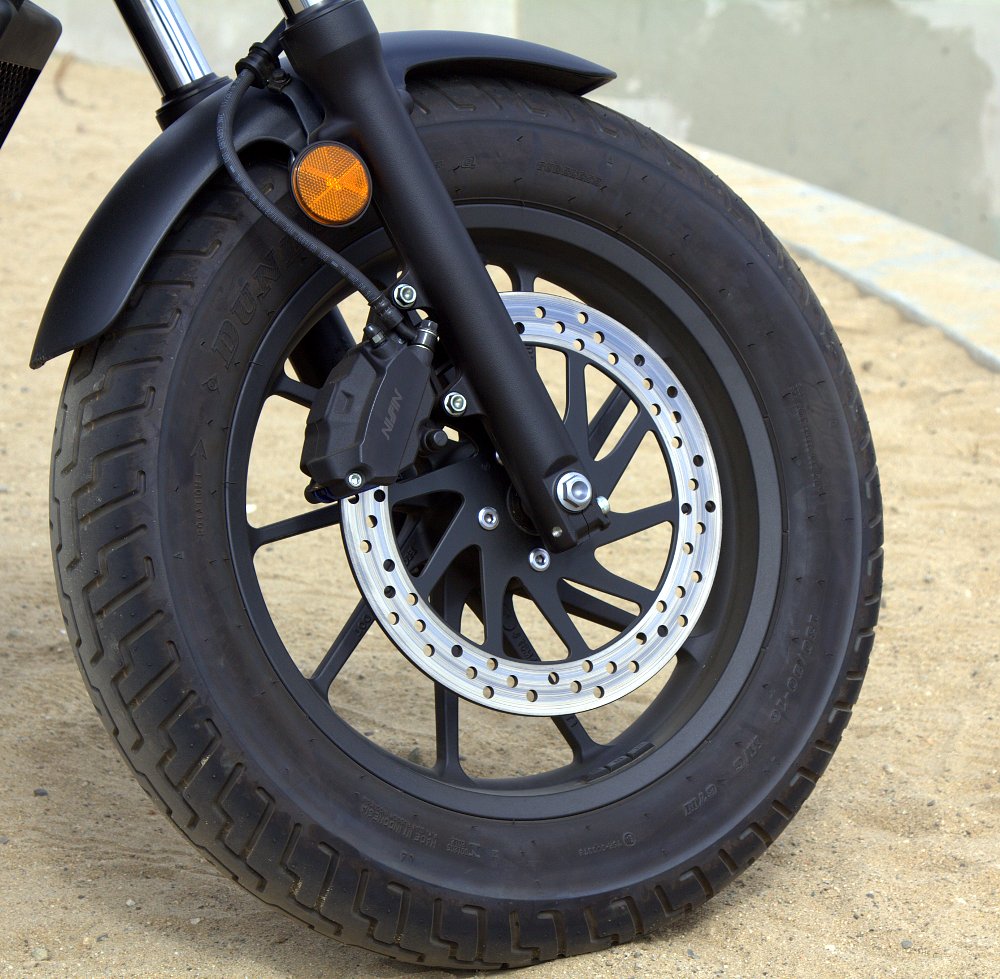
Handling was actually pretty similar between the old and new models, despite the wildly different front tires. The steepened rake angle on the new Rebel helps compensate for the much wider and heavier tire up front, so the the steering feels no slower than the outgoing Rebel. The bike has a great balance of responsiveness and stability.

The seat was comfy, the ergos inspired confidence and promoted control, and the large switchgear is of very high quality. (Harley-D, if you can find this supplier and buy the controls for the Street and Street Rod, you’ll be making a big improvement!)

Detail items were of surprisingly good quality, like the single instrument cluster that did its duty remarkably well with neither fuss nor fanfare. I did have one small qualm: the hero blobs on the pegs touch down at about the same time the pegs do! If I owned one of these and I was getting aggressive, I’d probably replace the blobs with longer ones for a little more warning before grinding away the footpegs.

The new Rebel is a very worthy replacement for the old one. The Rebel 250 felt just as I remembered it, but the years have crept on. My viewpoint of what makes a bike “acceptable” has shifted. It was imperceptible from day-to-day, but when presented with a bike I once owned 13 years later, it was evident that my rose-colored glasses were affecting my vision even more than my cynicism.
New riders, if you are reading this review, you have no context except trusting the word of a rider who’s ridden a few motorcycles. I cannot recommend this bike heartily enough to riders of all sizes. The Rebel 250 will go down in the books as an icon, but it has been replaced. It lived a long — though undignified — life, but it comported itself admirably. Like the Twinstar before it, we’ll see fewer and fewer of them in the wild, but the new bike is going to be a heartier welcome to new riders.
2017 Honda Rebel 500 and 300
| Price | $5,999 (500) / $4,399 (300) |
| Displacement | 471 cc (500) / 286 cc (300) |
| Bore x Stroke | 67 mm x 66.8 mm |
| Cooling | Liquid |
| Front Suspension | 41 mm telescopic fork |
| Rear Suspension | Twin shock |
| Front Brakes | Single 296 mm disc w/ hydraulic calipers |
| Rear Brakes | Single 240 mm disc w/ hydraulic calipers |
| Front Tire | 130/90-16 |
| Rear Tire | 150/80-16 |
*as claimed by the manufacturer























![AGV Sport Valiant Gloves [Size 2XL Only]](https://www.revzilla.com/product_images/0114/5130/agv_sport_valiant_gloves_300x300.jpg)
